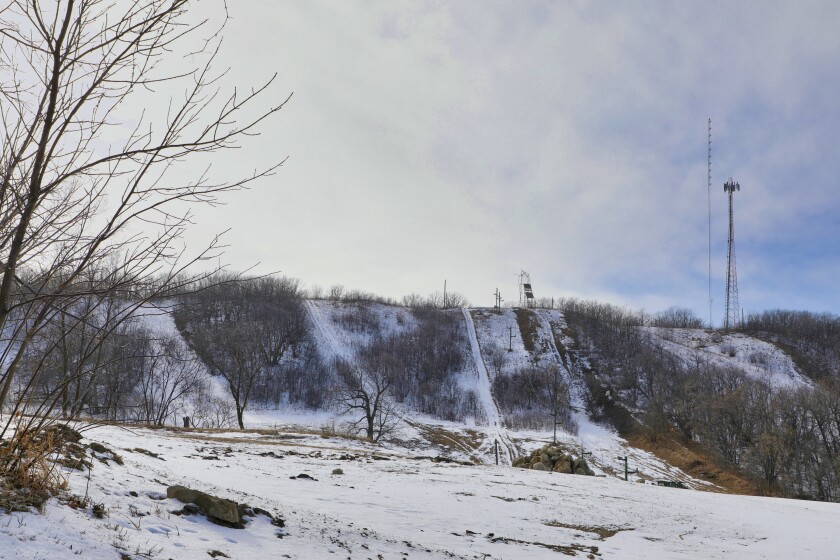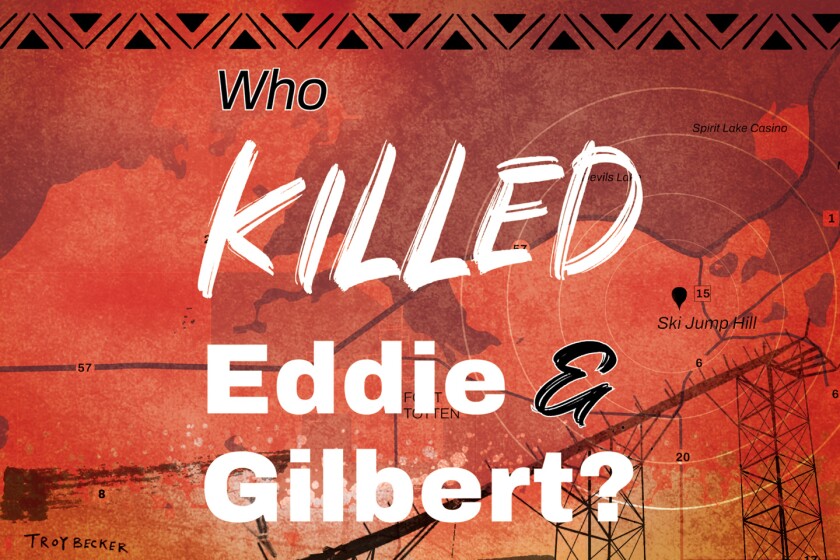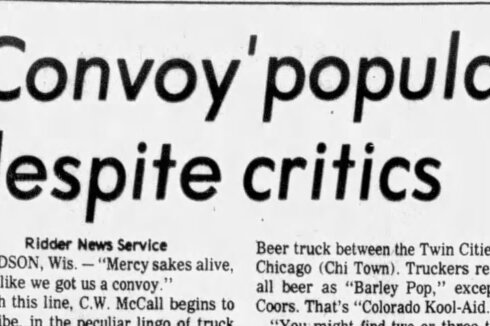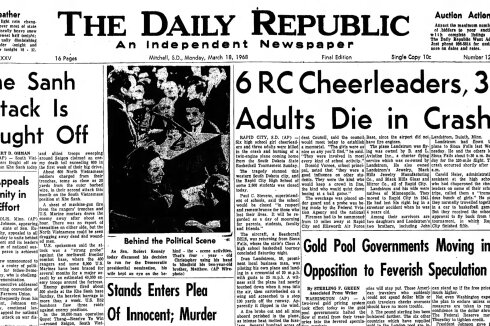Editor's note: This story is part one of an eight-part series examining the killings of Gilbert Fassett and Eddie Peltier on the Spirit Lake Nation in North Dakota. Veteran reporter Patrick Springer examines both cases and considers a sobering question: Were the men convicted of these murders guilty?
FORT TOTTEN, N.D. — Werner Rümmer began to give away almost everything he owned when it seemed that his life was finally about to open with new possibilities.
ADVERTISEMENT
He gave away books, food, clothing, lamps, toiletries — even his Xbox and PlayStation, favorite diversions that helped him pass the time behind bars.
He was preparing to be deported, an exile he welcomed. Then, just eight days before he was due to be released from prison and handed over to immigration officials and placed on a plane to Germany, the North Dakota Parole Board rescinded Rümmer’s parole on Nov. 2, 2022.
Explaining their reversal of a decision made six months earlier, Parole Board members said they’d received a letter from a juror and the state’s attorney’s office that prosecuted Rümmer, both expressing public safety concerns if Rümmer was released.
That despite the fact that days before Rümmer’s 1995 trial, the state’s attorney offered him a deal to serve 10 years of a 20-year sentence, with eligibility for parole with good behavior after six years and eight months.
In rejecting the plea offer, Rümmer asserted his innocence. (Rümmer’s last name was Kunkel at the time of his trial, but he later changed it to his birth name, Rümmer.)
Rümmer’s parole, given and withdrawn after he’d served 27 years, was unusual. It was granted even though he refused to admit to the crime that resulted in his life sentence: murder.
There was no physical evidence against Rümmer. There were no eyewitnesses. The case was entirely circumstantial and the prosecution couldn’t prove where the murder occurred.
ADVERTISEMENT
Despite those shortcomings, the jury believed seven witnesses who claimed that Rümmer had confessed to the killing. Most witnesses were fellow prison or jail inmates.

One witness was his former longtime girlfriend and the mother of his two sons, against whom Rümmer said he had filed a report of parental neglect.
Even though witnesses said Rümmer confessed, he has steadfastly denied having anything to do with the 1986 murder in Devils Lake. He filed three appeals, but his conviction was upheld on the basis of the confession witnesses’ statements.
Rümmer had an extensive criminal history before his conviction, one that included convictions for theft, fleeing police, reckless endangerment and assaulting police officers.
“I was a lost person,” Rümmer said this year. “The one thing I am not is a murderer.”
Suspicion inevitably fell upon Rümmer, who was the last person known to have seen the victim alive.
But he wasn’t arrested until nine years after the murder — after he had testified for the prosecution against a man convicted partly on his testimony to an unrelated double-homicide in Minot.
ADVERTISEMENT
John Peltier went looking for chokecherries on top of Ski Jump Hill, a landmark hilltop in rolling wooded country with a dense canopy of oak, aspen and birch trees overlooking the southern shore of Devils Lake.
Ski Jump Hill is a popular destination on the Spirit Lake Indian Reservation, with a scenic overview along Skyline Drive, with broadcast towers jutting into the sky and the skeletal remains of an old ski jump.
As he foraged for chokecherries, Peltier smelled a rotting odor down the hill. A retiree with bad knees and a heart condition, Peltier didn’t want to descend the steep grade.
So he got in his car and drove to nearby Whitehorse Hill National Game Preserve, where his nephew was riding his bicycle, and returned so 15-year-old Solomon could take a look.
“Do you smell that?” he asked his nephew, according to court testimony. “Smells like something — like a dead dog or something.” In the midst of some juneberry bushes, young Peltier saw something unexpected: a body lying face down.

He raced up the hill. “Uncle John, there’s a guy dead down there with his shirt pulled up.” A retired police officer, John Peltier drove 3 miles west to Fort Totten and stopped at the home of James Yankton, an officer with the Bureau of Indian Affairs police.
A year earlier, Yankton had been credited with solving the murder of John Petier's son, Eddie Peltier, a former Devils Lake police officer whose body was found on a highway near Ski Jump Hill.
ADVERTISEMENT
Soon investigators swarmed the scene where the body was found on Aug. 10, 1986.
The body was of a Spirit Lake man in his 20s who wore blue jeans, a plaid shirt and tennis shoes.
The investigators noted a path leading to the body, which was about 45 feet down from the road, where the grass had been laid down, suggesting the body had been dragged.
Yankton noted six holes in the back of the body, all about the size of his index finger and spaced three to five inches apart.
The lower left arm bore a tattoo of a war bonnet and the right pants pocket had been pulled open. One hand, according to police reports, was grasping a twig from a berry bush.

The top of the scalp had been sliced off and was lying a few feet from the head.
Following an autopsy the next day, the body was identified through dental records and fingerprints as Gilbert Fassett, age 28, of Fort Totten.
ADVERTISEMENT
Whoever killed Fassett was enraged. Or wanted to send a message. The body was riddled with too many stab wounds to count; estimates ranged from 90 to more than 100. Pathologists found lesions “suspicious for knife wounds” and “suspicious for bullet wounds,” but recovered no bullets from the body.
Despite all the wounds, investigators did not find any blood near the body, although it had rained in recent days.
The body was badly decomposed. Based on its condition, the pathology report estimated the time of death had occurred seven or eight days earlier.
The pathologist leading the autopsy scraped off some maggots and inserted them into a glass jar for examination — “silent witnesses” studied to estimate the time of death that later would be hotly contested.
On the last day he was seen alive, Gilbert Fassett was released from jail in Devils Lake, where he served a two-day sentence for driving while intoxicated.
The FBI, which was involved in the investigation because his body was found on the reservation, said Fassett was a known drug dealer.
A possible motive for his murder, suggested by information provided to the FBI, was that Fassett was a “small time drug dealer who owed everyone and drank up his drug profits.”
ADVERTISEMENT
It also suggested a possible explanation for why Fassett, who left jail with no money, was seen with a roll of cash on the night of the last day he was seen alive.
Sometime before his death, a drug supplier with a “crazy” reputation had fronted Fassett 1 1⁄2 ounces of cocaine, a debt Fassett never repaid, claiming that “somebody ripped him off,” according to the informant.
Investigators heard a rumor that Fassett hadn’t repaid the supplier $2,000 or more at the time he was murdered.
Fassett's mother reported him missing on Aug. 4, six days before his body was found. She told Devils Lake police that she’d heard that her son had been killed “up at Skyline,” the scenic drive at Ski Jump Hill, right where the body was discovered days later.
For whatever reason, despite his mother’s worries that he had been murdered, authorities didn’t instigate a search for Fassett.
Not only was the mother concerned that her son was murdered, she told the investigator, according to a police report, that she’d heard that a “cop” was responsible for her son’s death.
That suspicion was never made known to the jury that convicted Rümmer of Fassett’s murder in 1995.










